Spring 2001
Batten Symposium, April 19, Kent State University
Batten Award Winners: How They Did It
“West Virginia After Coal”
The Herald-Dispatch, Huntington, West Virginia Public Broadcasting
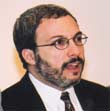
Len LaCara,
Managing Editor,
The Herald-Dispatch:
The whole point of what we set out to do is to get people talking and to get a dialogue going on what West Virginia needs to do to prepare for a future whether there’s coal there or not.
What was interesting is that, when we did our polling, it was stuff the people out there already knew. They knew we couldn’t depend on coal. They knew there needed to be jobs, jobs, jobs, the number-one mantra in West Virginia.
Our function was to present that in a form people could understand and react to. And hopefully our state legislature and business leaders would take it to heart and run with it.
There’s evidence this is already happening…The legislature has added some new requirements…The West Virginia Development Office is going to have to show some more results from the money they’re spending.
We have an opportunity to take the coal severance taxes that were at the heart of the project. And with the increase in coal production as a result of the California energy crisis, we now have the means where we can say…maybe now is the time to take a look at how we’re spending this money and start diverting it for economic development.
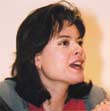
Suzanne Higgins,
WVPB Senior Producer:
We approached this multimedia effort asking ourselves: How can we do it differently?
…We did start with content. We assembled a very impressive advisory board. We brought in our economists who had done the studies from our universities. We brought business, coal, organized labor, environmentalists.
We met for six months, one meeting a month. … By the second and third [meeting], a lot of the posturing had melted away. It was an amazing, a very interesting research exercise.
They really did help us focus to get beyond coal …It was clear after all these meetings, we needed to upgrade the workforce. We needed to hold our state government accountable for the investments that they make. And we needed to bend over backwards to nurture our small business community. So that helped us define the content.
Now, giving everyone a voice was a much loftier task indeed … Our answer came in a small black box. It’s called the V-Brick and it was, up to this point, used only for videoconferencing … In short, we had plug-and-play studios.
So we had our 10 town-hall sites. Then we asked: Who do we really want to come to this? In the year prior … the environmentalists would pack the audience or the coal operators and coal miners.
We came up with a list of folks … big business and small business and organized labor. But also on our list were the unemployed, job seekers, students, clergy, health care officials, parents, teachers, everyone who had a stake.
So, not only were we trying to hear others’ solutions, but we gave a voice to some folks who may have been intimidated.
It made for a very strong broadcast
“Unrealized Assets”
The Eagle-Tribune, Lawrence, MA
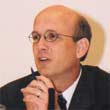
Steve Lambert,
Executive Editor:
Lawrence was a city everybody loved to pick on. And quite frankly, the newspaper was part of the problem. We logged every drug arrest. We highlighted every scar. We bannered every political scandal. What we didn’t do was show the kind of leadership cities like Lawrence need in times like this.
It’s a very delicate balance. You don’t want to cross certain lines. Our intention in “Unrealized Assets” wasn’t to be a cheerleader for the city, but it was to take a very serious look at the untapped opportunities that exist there.
One example I’ll share with you is the Latino community. Lawrence is the most Hispanic city in Massachusetts … 60 percent Hispanic.
That’s a rich diversity … but to a lot of the families of those Irish and Italian immigrants who developed the city in the early 20th century, Latinos were viewed as a threat. They’re the ones who cause the drugs and high crime. They were an ungrateful culture that didn’t want to learn English or were more interested in taking from the community rather than giving anything back.
Through this series, we’ve sort of broken through some of those myths. And we’ve begun to build bridges in a community that was very, very resistant to do that … And I’m proud of the newspaper’s role in that.
… I think that the recent census report is a shot across the bow to the entire country. Our world is changing and we need to respond to that, and use that, not as a threat, but as an opportunity.
We followed up “Unrealized Assets” with a lot of civic journalism types of things. We held a series of town meetings in Lawrence on the whole issue of building bridges between Lawrence and (neighboring) Andover, the most affluent community in all of Massachusetts.
We recently started a Spanish language edition that comes out once a week. Some of the feedback we got on that from the established community was that, you know, our ancestors didn’t have that advantage. They all had to learn English.
In fact that wasn’t true …During the early part of the century there were a half-dozen foreign language papers that circulated in our area. So it was another myth we tried to break down and prove wrong. I see that as a big part of our role here.
In a lot of ways it’s re-energized our newsroom and helped redefine what it is we’re here for. We’re not simply reporting the news. We’re not just writing about scandal and throwing in a sports section and throwing in a feature section. We really have a purpose.
We have a real mission this year to try to build bridges in our community and make our community better.
“Moment of Truth”
Chronicle-Tribune, Marion, IN
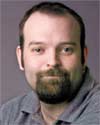
Steve Doucette,
Designer:
The recognition that the “Moment of Truth” has gotten is really a testimonial to what a newspaper can do when it examines itself honestly and realizes that it’s not telling the whole story.
We didn’t believe we were telling the whole story. We were too busy covering the news as it happened, whether it was a factory closing, or teen pregnancy rates, or low test scores in our schools.
Then we learned that our city of Marion had lost more population than any city in the last 10 years in the whole state of Indiana. Shortly after that, a major factory closed taking 500 jobs with it. We knew that as a newspaper we had to do something, no matter what our resources were. This effort to tell the whole story of Marion is what “Moment of Truth” became. It was a 10-month, 120-page look in the mirror.
A few of the things that have come from the project is that the newspaper has teamed up with General Motors, our county’s second largest employer, for leadership summits that have involved over 1,000 people. This week, they’re going into the schools and taking the leadership initiative to our school children and making them leaders in our community.
Because of “Moment of Truth,” the local YWCA bought a house and opened the first counseling home for pregnant teenagers where they learn about prenatal care, and choices and consequences. A private Christian college in our community, Indiana Wesleyan University, has decided to make “Moment of Truth” a centerpiece on its campus. They made volunteering within the community part of its curriculum; a curriculum that hadn’t been changed in over 10 years.
And just two weeks ago, the entire city mobilized for an operation cleanup. Neighborhood groups walked the streets and picked up trash, and volunteered to repair 30 rundown homes in the center of the city … In total, 900 tons of trash were removed.
I’m very proud of our small staff – we have about 23 people in the newsroom – for its commitment and the determination it took to do this project.
Most of all, the staff is very proud that the project has made a difference in the community and it’s really seeing change.
“On the Verge”
Portland (ME) Press Herald
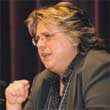
Jeannine Guttman,
Executive Editor:
Civic journalism I view as kick-ass journalism. It is really revolutionary journalism. It gives voice to the voiceless, something I was taught at this university was a core value of this profession. It also breaks the silences that sometimes a community uses to mask the truth about what’s really going on.
Barbara Walsh, our Pulitzer Prize-winning reporter, worked on this series for 15 months. When I first told her I wanted to tap into [our teen] community she said, “Great, I got it all set up. Kids who murder, kids who rape, kids on drugs.”
I said, “No, Barbara, you know, the average kids.” And she said, “How do I do that?” I said, “I’m not really sure.”
Portland City Council had passed an anti-loitering ordinance and kids felt really attacked. That they had no place to go. That if you were a young person in Maine, you were basically viewed as kind of a criminal. The kids felt … no one listened to them, no one valued them and that they were invisible.
We had a forum. It was after Columbine. At first the kids were very happy to be there. Then after about 20 minutes they said: You know, you people in the media, you only want to talk to us when there’s a shooting at a school, when a kid is arrested for something, when there’s drinking at a sports event. You never really listen to us. … We had to overcome a credibility issue with them.
Barbara produced a five-part series. For each part she interviewed more than 100 teenagers … A really interesting part of this – we decided to limit dramatically the adult voices in the series. So no parents to balance what the kids were saying. No psychiatrists or psychologists or teen sociologists who observe from a distance and comment on these behaviors. We just talked to kids.
In part three, the kids from divorced families told us their lives were terrible. Their families were broken…The adult community did not react very well. Most parents who had been through this had developed a mythology: I’m being a good parent. When the story came out, they had to face the reality that their kids saw this differently. One father asked us, “Why didn’t you call me and get my side of the story?”
In fact, we’ve heard that story, haven’t we? We haven’t heard this story. That’s why I say that civic journalism is so revolutionary. The stories we tell people are so predictable and so old you can recite them before you get beyond the byline.
This stuff is great. All of what you’ve heard here today, this is amazing stuff, and when readers read it, they know it when they see it – they react really differently.
It’s almost as though you have found some new genre of journalism.
“Guinea Pig Kids”
Minnesota Public Radio
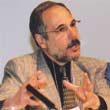
Len Witt,
Executive Director,
Civic Journalism Initiative:
“Guinea Pig Kids” grew out of what the kids are calling themselves because the state … implemented this new thing called profiles of learning-24, show- us-what-you-know packages that every kid needed to complete before graduating in 2002.
We were starting to get feedback that it wasn’t working as well as the state had hoped…Most of what all the newspapers and TV stations were doing was covering pretty much what the official word was … but we weren’t getting the real story from the people on the front line, the students, the parents and the teachers.
So we decided to go into three different schools…an inner-city school in Minneapolis, a suburban school, and then to a tiny farm community. We set up forums and we had little handheld keypads so that a few people couldn’t dominate the conversation…It became real clear that this one-size program fits all wasn’t going to work.
…The reporters took this information and did over four months of reporting. Our online team was doing a special site. You could go in and actually take a lot of the tests that the kids had to have so you’d get samples of what they were doing.
The outcome of all of this was… they introduced a new bill to change the law … and return implementation to the local level.
“Election Guide 2000”
America Online, Inc.
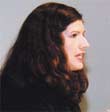
Kathleen Hayden,
Executive Producer:
We knew this year a record number of voters would go online to find their election information. Our goal was to give them the information they needed to make an informed decision in November.
We had an advantage, we’ve done this before – in ’96 and ’98. The main thing [our users] were looking for was straight, unfiltered, candidate information. So goal number-one – provide that for them.
AOL currently has 29 million members and everything that we did … had to be universal and tailored to a mass market.
Our online election guide had all federal races, as well as state and local. The challenge was to make it as usable as possible and inject some fun into it as well…The key was localization, to allow users to input their ZIP code and get all of the information and the names of candidates in their district.
We also wanted to give them a more direct line of communication to the candidates themselves. We had online chats with all of the presidential candidates … We had virtual debate halls that both presidential candidates down to dogcatcher level participated in. We had a president match application – people could input their stances on the issues and get back their percentage match with each candidate and get some better sense of a president who would best suit them.
It was a big success. Our traffic exceeded all of our expectations.
And the localization piece has proved so valuable it’s being incorporated into a lot of AOL products. We just relaunched our government guide, which through your ZIP or city, you can find out all of the county, state, or federal government services in your area. So we’re taking a tool that was successful in the election and building it into other products.
